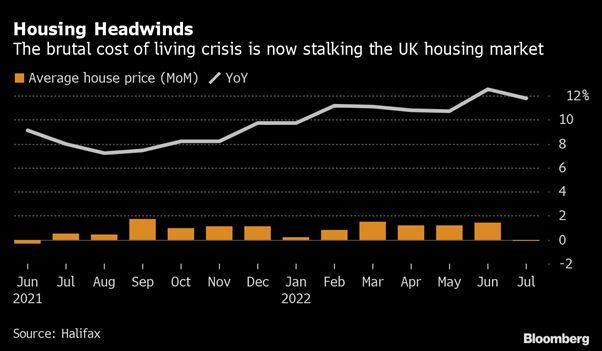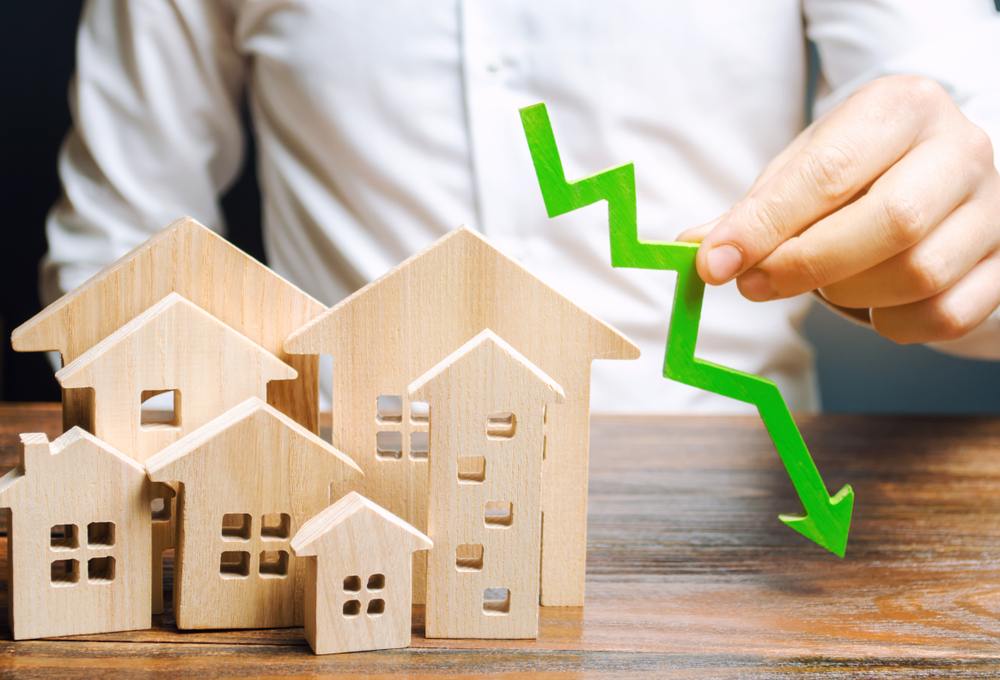Despite the fall, a typical UK property now costs £293,221 and it remains the case that price gains for bigger houses are noticeably outpacing those for smaller homes
House prices saw a marginal dip of 0.1% in July, the first signs of cooling in the market following a frenetic couple of years, according to the latest market analysis from Halifax.

Despite the fall, a typical UK property now costs £293,221 and it remains the case that price gains for bigger houses are noticeably outpacing those for smaller homes. The price of a detached house has leapt by £60,860 (+15.1%) over the last year, compared to £11,962 (+7.7%) for flats.
Wales has moved back to the top of the table for annual house price inflation, up by +14.7%, with an average property price of £222,639. It’s closely followed by the South West of England, which also continues to record a strong rate of annual growth, up by +14.3%, with an average property cost of £310,846.
The rate of annual growth in Northern Ireland eased back slightly to +14.0%, with a typical home now costing £187,102.
Scotland too saw a slight slowdown in the rate of annual house price inflation, to +9.6% from +9.9%. A Scottish home now costs an average of £203,677, another record high for the nation.
While London continues to record slower annual house price inflation than the other UK regions, the rate of +7.9% is the highest in almost five years. With an average property now costing £551,777, the capital’s already recording average house price continues to push higher, up by £40,361 over the last year. It remains by far the most expensive place in the country to buy a home.
Russell Galley, Managing Director, Halifax, said: Following a year of exceptionally strong growth, UK house prices fell last month for the first time since June 2021, albeit marginally (-0.1%). This left the average house price at £293,221, down £365 from the previous month’s record high. The rate of annual inflation eased slightly (to +11.8%), although it’s important to note that house prices remain more than £30,000 higher than this time last year.
While we shouldn’t read too much into any single month, especially as the fall is only fractional, a slowdown in annual house price growth has been expected for some time. Leading indicators of the housing market have Average house price recently shown a softening of activity while rising borrowing costs are adding to the squeeze on household budgets against a backdrop of exceptionally high house price-to-income ratios, he said.
That said, some of the drivers of the buoyant market we’ve seen over recent years – such as extra funds saved during the pandemic, fundamental changes in how people use their homes, and investment demand, still remain evident. The extremely short supply of homes for sale is also a significant long-term challenge but serves to underpin high property prices, he said.
He said: Looking ahead, house prices are likely to come under more pressure as those market tailwinds fade further and the headwinds of rising interest rates and increased living costs take a firmer hold. Therefore a slowing of annual house price inflation still seems the most likely scenario.






